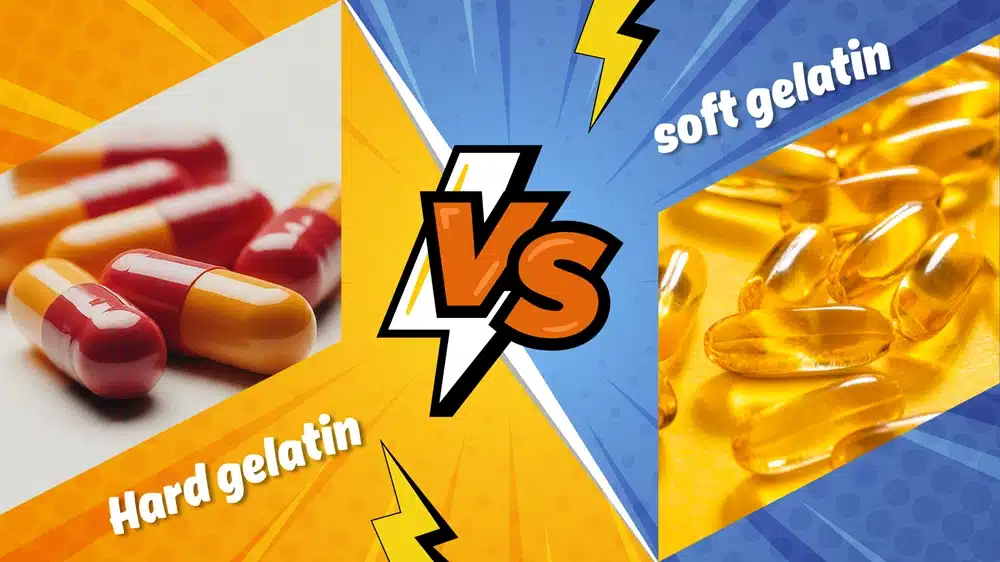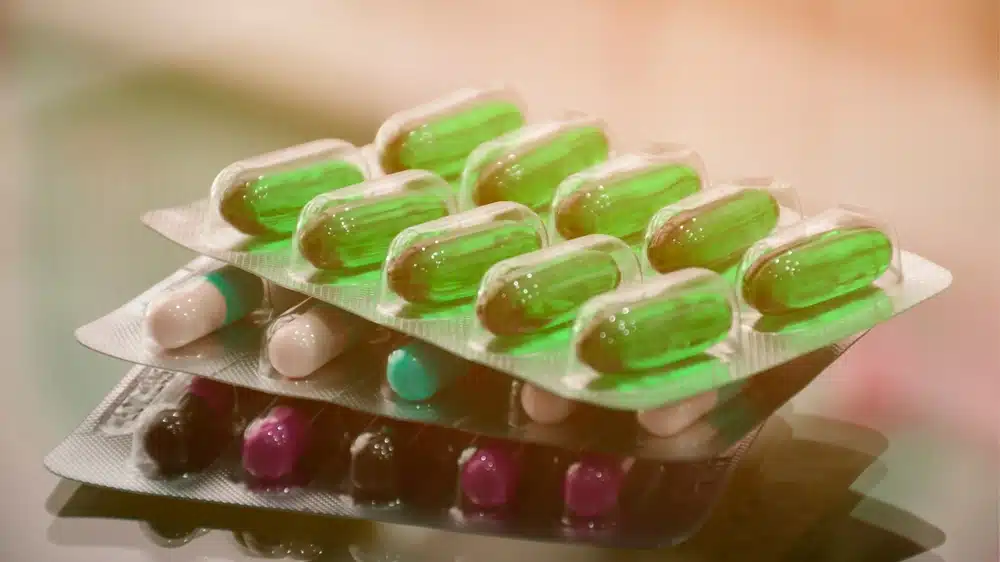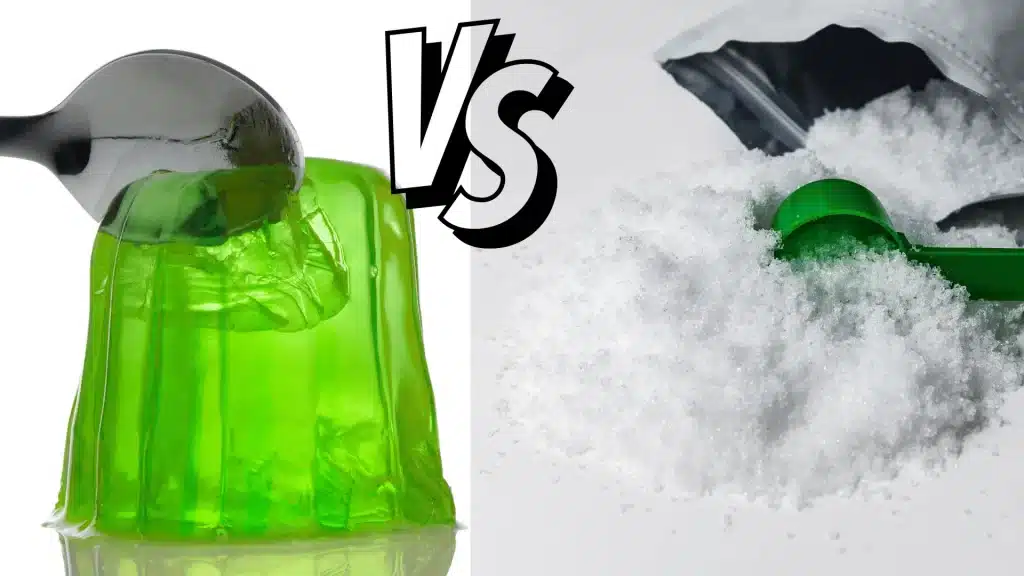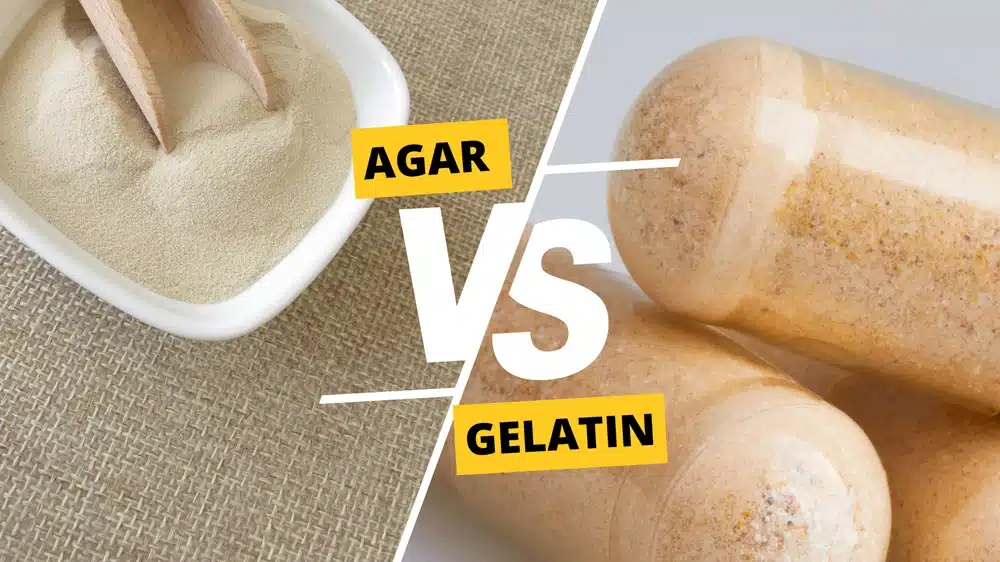In the world of nutraceuticals and pharmaceuticals, the choice of capsule can be as critical as the ingredients inside. As a brand owner, manufacturer, or consumer, understanding the fundamental differences between hard gelatin vs soft gelatin capsules is essential for ensuring product efficacy, stability, and market appeal. This guide cuts through the technical jargon to provide a clear, comprehensive overview of each capsule type. We’ll explore their unique characteristics, ideal applications, and key considerations—from fill material to cost-effectiveness—so you can confidently make the right choice to protect your product and deliver the best possible experience to your customers.

what is hard gelatin
Hard gelatin, often referred to as a “two-piece capsule,” is a staple in the world of oral dosage forms. It’s a hollow shell made primarily from gelatin—a protein derived from animal collagen—that is designed to be filled with powdered, granulated, or even liquid ingredients.
The defining characteristic of a hard gelatin capsule is its distinct two-part structure: a shorter, wider “body” that holds the fill material, and a longer, narrower “cap” that fits snugly over the body to seal the contents. This simple yet ingenious design makes it incredibly versatile and efficient for mass production.
Key Features of Hard Gelatin Capsules
- Composition: Made from gelatin, water, and often a small amount of coloring or opacifying agents. Gelatin is a highly stable and well-tolerated material, which is why it’s been used for decades.
- Ideal for Powder Fills: Hard gelatin capsules are the standard choice for encapsulating dry powders and granules. Their two-piece structure makes the filling process straightforward and scalable.
- Customization: They are available in a wide range of sizes and colors, offering brands excellent flexibility for product differentiation and branding.
- Quick Disintegration: Once ingested, the gelatin shell rapidly dissolves in the stomach, ensuring a swift release of the active ingredients for optimal bioavailability.
when you see a dietary supplement or medication in a familiar, cylindrical capsule with two interlocking pieces, you’re most likely looking at a hard gelatin capsule. Its proven reliability and adaptability make it a top choice for manufacturers seeking a high-quality, cost-effective, and consumer-friendly delivery system.
What is Soft Gelatin?
Soft gelatin, often referred to as softgels, is a type of capsule widely used in the pharmaceutical and nutraceutical industries. It consists of a single, hermetically sealed shell made primarily from gelatin, a plasticizer (like glycerin or sorbitol) to give it a soft, pliable texture, and water. This unique composition creates a flexible, liquid-filled capsule that is distinct from its rigid counterpart, the hard gelatin capsule.
The key characteristic of a softgel is its single-piece construction, which is manufactured and filled in a single, continuous process. The soft, seamless shell is designed to hold various types of liquid, semi-solid, or paste-like fill materials. This makes it an ideal delivery system for.
Key Features of soft Gelatin Capsules
- Oils and Oil-Based Supplements: Omega-3 fish oil, vitamin E, and CBD oil are perfect candidates for softgels because the sealed shell prevents oxidation and degradation.
- Suspensions and Solutions: Ingredients that are not easily compressed into a powder or tablet can be delivered in a stable liquid form within a softgel.
- High-Potency Active Ingredients: Softgels are excellent for protecting sensitive active ingredients from light and air, ensuring their stability and potency over time.
soft gelatin provides a highly stable, bioavailable, and user-friendly solution for delivering a wide range of supplements and medications, making it a favorite for both manufacturers and consumers.
Hard gelatin vs soft gelatin:difference between hard gelatin and soft gelatin
When it comes to pharmaceutical and nutraceutical encapsulation, the choice between hard gelatin vs soft gelatin is a fundamental one, each with distinct advantages and applications. While both are made from gelatin, their structure, manufacturing process, and ideal uses are what truly set them apart.Here is a detailed breakdown of the key differences between hard and soft gelatin capsules:
| Feature | Hard Gelatin Capsules | Soft Gelatin Capsules (Softgels) |
| Structure | A two-piece shell consisting of a body and a cap that fit together. | A single, hermetically sealed, one-piece shell. |
| Manufacturing | The empty shells are manufactured first, then filled with powder or granules in a separate process. | The shell is formed, filled, and sealed in a single, continuous manufacturing process (the “rotary die” method). |
| Fill Material | Primarily designed for dry ingredients, such as powders, granules, and pellets. | Specifically designed for liquids, semi-solids, and oil-based substances. |
| Stability | The two-piece structure is not fully airtight, making the contents more susceptible to oxidation and moisture. | The hermetically sealed, one-piece shell provides a superior barrier against light and air, protecting the contents from oxidation and degradation. |
| Appearance | Cylindrical, with a visible join line between the body and the cap. They can be clear or colored. | Typically oval, round, or oblong in shape. They are smooth, translucent, and have a seamless appearance. |
| Bioavailability | The powder fill must first dissolve in the stomach before the active ingredients are released. | The liquid fill is often pre-dissolved, which can lead to faster and more efficient absorption of the active ingredients. |
| Cost | Generally more cost-effective for smaller batch runs and for filling with powdered ingredients. | Can be more expensive to manufacture due to the specialized equipment and integrated filling process. |
| Common Uses | Vitamins in powder form, herbal supplements, probiotics, and many prescription drugs. | Omega-3 fish oil, CBD oil, fat-soluble vitamins (A, D, E), and liquid medication. |
the core difference between hard gelatin and soft gelatin lies in their structural integrity and the type of fill material they are designed to hold. Hard gelatin capsules offer flexibility for a wide range of dry ingredients, while softgels provide a superior, sealed environment for protecting and delivering liquid or oil-based substances. Choosing the right one depends entirely on the formulation of your product and your desired outcome for stability and bioavailability.

Hard gelatin vs soft gelatin: How to choose the right one?
In the competitive world of health supplements and pharmaceuticals, the choice of capsule can significantly impact your product’s performance, stability, and consumer appeal. As a professional in the industry, I know that deciding between hard gelatin vs soft gelatin capsules isn’t just a matter of preference—it’s a strategic business decision. The right choice is the one that best serves your product’s unique formulation and your manufacturing goals. By understanding the core differences and their implications, you can confidently partner with a capsule supplement manufacturing provider that aligns with your specific needs.
1. Analyze Your Product’s Formulation
The single most important factor is the nature of your active ingredients.
- Hard Gelatin: This is the ideal choice for dry, stable ingredients. If your formula consists of powders, granules, or pellets (like herbal extracts, probiotics, or vitamins B and C), hard gelatin capsules are the go-to solution. They are also highly versatile for creating custom blends and dosages.
- Soft Gelatin: If your product contains liquids, semi-solids, or oil-based ingredients, a softgel is almost always the superior choice. Think Omega-3 fish oil, vitamin E, or CBD oil. The single, hermetically sealed shell of a softgel provides an unparalleled barrier against oxidation and light, protecting the integrity and potency of these sensitive ingredients. This is a critical consideration for Softgel capsule manufacturing.
2. Consider Stability and Shelf Life
A product’s stability directly affects its effectiveness and market longevity.
- Hard Gelatin: While a great option for dry ingredients, the two-piece structure is not fully airtight. This can make the contents susceptible to moisture and environmental factors, potentially shortening the shelf life of highly sensitive ingredients.
- Soft Gelatin: The seamless, one-piece construction of softgels creates a complete seal, offering a superior barrier against external elements. This makes them the premium choice for ensuring the long-term stability and potency of liquid and oil-based formulations.
3. Evaluate Bioavailability and Consumer Experience
How quickly and effectively a supplement is absorbed is a key consumer concern.
- Hard Gelatin: The fill material must first dissolve in the stomach, which can sometimes result in a slower release of the active ingredients. However, they are a widely accepted and trusted form factor.
- Soft Gelatin: Because the active ingredients are often pre-dissolved or suspended in a liquid or oil base, they are ready for immediate absorption by the body. This can lead to faster and more efficient bioavailability. Additionally, many consumers find softgels easier to swallow due to their smooth, flexible shape, which can enhance overall user compliance.
4. Manufacturing and Cost Considerations
The choice also has practical implications for your production process.
- Hard Gelatin: This type of capsule is generally more cost-effective to produce, especially for smaller batches. Capsule supplement manufacturing with hard gelatin is a simpler, two-step process (shell creation and filling), which can reduce overall costs.
- Soft Gelatin: The integrated manufacturing process for softgels is more complex and requires specialized equipment. This can lead to higher production costs, making Softgel capsule manufacturing best suited for larger-scale operations where the benefits of a superior delivery system justify the investment.
the decision between hard gelatin vs soft gelatin is a nuanced one. By carefully evaluating your product’s formulation, its stability requirements, and your market’s consumer preferences, you can make a strategic choice that not only protects your product but also positions it for success.
FAQs
What are the advantages of hard gelatin?
They are easy to manufacture, suitable for a wide range of powders and granules, allow for customized dosages, and are generally more cost-effective.
What are the disadvantages of hard gelatin?
They are not hermetically sealed, making them unsuitable for ingredients that are sensitive to light, oxygen, or moisture.
Do softgels dissolve in the stomach?
Yes, softgels are designed to dissolve rapidly in the stomach, releasing their contents for absorption.
Is gelatin unhealthy?
Gelatin is generally considered safe. It is a protein and is harmless to most people when used correctly.
Is gelatin difficult to digest?
No, gelatin is a hydrolyzed protein, which is easily digested and absorbed by the body.
What is a substitute for gelatin?
Plant-based alternatives can be used, such as carrageenan, gellan gum, or pectin.



